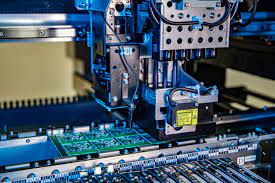The world of electronics owes much of its innovation and growth to Printed Circuit Boards (PCBs). These unassuming, flat boards are the lifeblood of modern electronics, serving as the foundation upon which countless electronic devices are built. best pcb manufacturers in china is a precise and intricate process that melds art and science, resulting in the creation of these vital components.
The Blueprint for Electronics
Before delving into the intricacies of PCB fabrication, it’s crucial to understand the pivotal role these boards play. PCBs serve as a conduit for connecting and organizing electronic components, like resistors, capacitors, and integrated circuits. These components work in harmony, thanks to the interconnected copper pathways etched onto the PCB. The design of these copper traces is akin to the architectural blueprints of a building, determining how the electronic signals flow throughout the system.
A Symphony of Materials and Processes
PCB fabrication involves a meticulous dance of materials and processes. It typically begins with the choice of substrate material, which is usually fiberglass reinforced epoxy, known as FR-4. The substrate provides the structural support and insulation for the copper traces. The next step is the application of a photosensitive material, which forms a protective layer over the copper. A CAD-designed negative image of the circuit layout is exposed onto the board, hardening the protective layer where copper should remain. Unprotected areas are then etched away, leaving behind the circuit’s copper traces.
Layers of Complexity
Modern electronics often demand more than just a single layer of copper traces. Multilayer PCBs are common, where multiple layers of substrate and copper are sandwiched together, interconnected through tiny vias. These vias enable a complex three-dimensional circuit architecture, allowing for greater functionality in a smaller space. The fabrication of multilayer PCBs requires even greater precision, as each layer must align perfectly with the others to ensure electrical connectivity.


